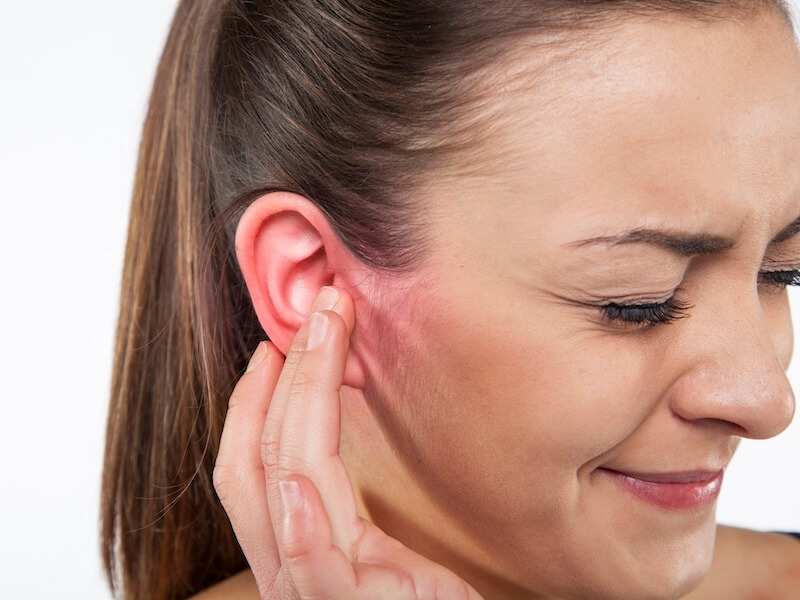
Surprisingly, about 20% of all ear infections afflict adults. The common notion is that ear infections are something that normally affect children. Ear infections are definitely more prevalent in kids but adults do get them too.
For adults with hearing impairments or hearing loss, ear infections can be particularly inconvenient, as they can interact with hearing aids in some unpleasant ways. Hearing aids can also harbor germs that could result in an ear infection if they are not correctly cleaned and maintained.
So, you may be wondering: Can I wear hearing aids while I have an ear infection? Overall, the answer is yes, but you might not want to. Ear infections can cause substantial swelling and discomfort in the ear, and your hearing aids might worsen those symptoms. However, there are some steps that people who use hearing aids can take to help avoid and treat ear infection symptoms.
Do hearing aids cause ear infections?
You may be wondering if your hearing aid is the cause of your ear infection if you’re an adult with hearing impairment. The technical answer is no. But more nuance is needed to understand the whole story.
Almost all ear infections are caused by bacteria or a virus that gets into the ear. There are a wide range of vectors that can lead to infection. In some instances, the inner ear becomes infected after a past illness (for instance, a sinus infection or a cold). In other cases, fluid accumulation might lead to an infection. And it’s also definitely possible for viruses and bacteria to infect the inner ear through simple transmission.
This can occur with some frequency to individuals who wear hearing aids. Your hearing aid accumulates this bacteria or virus and then gets inserted directly into your ear. That’s why it is critical for individuals with hearing loss to correctly maintain and clean their devices. In other words, the hearing aid itself does not cause the ear infection, the virus or bacteria does. But your hearing aid does play a part in this transmission.
Interactions between hearing aids and ear infections
So what is the degree of interaction between hearing aids and ear infections? The best way to anticipate what to expect is to look at the most prevalent ear infection symptoms. Here are a few of the most common symptoms of ear infections:
- Ringing in the ears (tinnitus)
- Ear pressure or a feeling of fullness
- Swelling and inflammation
- Dizziness or vertigo
- In some instances, temporary hearing loss
- Ear pain
- Discharge of fluid from the ear
Needless to say, everybody will experience the symptoms in their own way. Usually, you will have noticeable inflammation of the inner ear and ear pain in the infected ear. These symptoms can have a negative interaction with hearing aids for people with hearing loss. That’s because the hearing aid goes inside the infected ear (at least some of it). Because the ear canal is irritated and tender, your hearing aids may cause extra discomfort.
Also, with a hearing aid that goes primarily inside the ear canal, fluid drainage can be blocked. When fluids cannot drain, your discomfort might become prolonged. The pain and pressure in your ears will be increased as a result of this. This pressure can be even more pronounced when you’re wearing your hearing aid.
This added moisture can also impair the function of your hearing aid. So your hearing aids aren’t working at peak performance and your ears are in pain. This means that you will have a terrible time wearing your hearing aid while you have an ear infection.
Strategies to wearing hearing aids with an ear infection
So what can you do if your hearing aids are bothering you while you have an ear infection? You can lower your risk of developing an ear infection and manage any discomfort that an ear infection may cause by taking a few steps. Those steps include the following:
- Talk to your healthcare provider: You should talk to your doctor sooner than later if you think you may be developing an ear infection. Treating a hearing aid as soon as possible will decrease the chance of it becoming severe or prolonged.
- Take breaks from wearing your hearing aids: If the pain is persistent or severe, it’s okay to take a break from wearing your hearing aid until your ears are feeling better. You can use alternative methods of communication with family and friends, like texting, in the meantime.
- Practice good ear hygiene: This means regularly cleaning your outer ear and, generally, keeping your ears dry and clean. However, you should never stick any object in your ear and that includes cotton swabs. Using cotton swabs can push earwax and other debris further into your ear, increasing your chance of developing an infection. This is the opposite of what you’re likely attempting to do.
- Regularly clean your hearing aids: Keeping your device clean can lessen the chance of transmitting bacteria or viruses to your ears. If you don’t know how to clean and sanitize hearing aids, talk to us for a quick tutorial.
- Talk to your hearing specialist: If your ears begin to feel better, but the discomfort from your hearing aids doesn’t go away, think about talking to us to see if you can get a better fit on your devices.
Hearing aids are likely a crucial part of your daily life. They help you communicate with family and friends and move around the world more easily. That makes it really difficult to give up your hearing aid even for short periods. However, taking a break from your hearing aids while you have an ear infection can help you recover from your infection more quickly and more comfortably. That means you can get back to enjoying what you hear faster.
Ear infections are relatively common. But that doesn’t mean you shouldn’t seek out treatment or try to prevent them. If you have questions about how ear infections may affect your hearing aid use, give us a call today.
